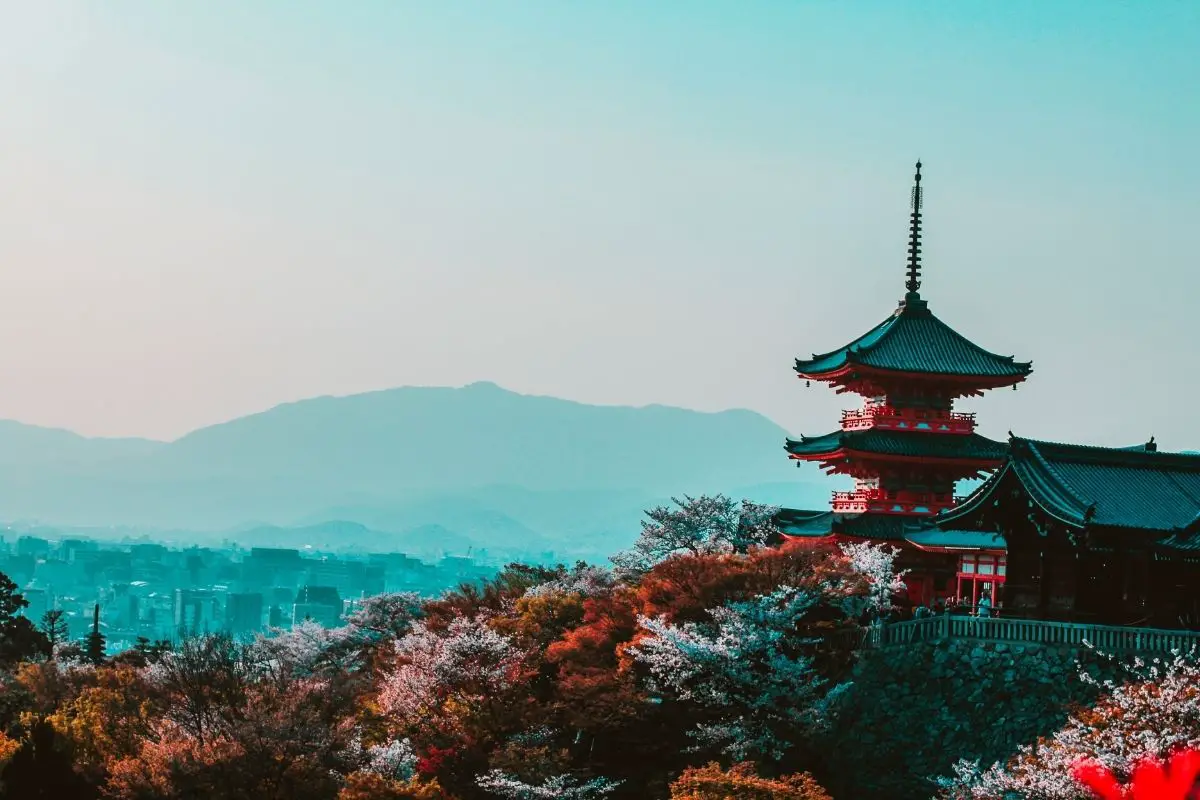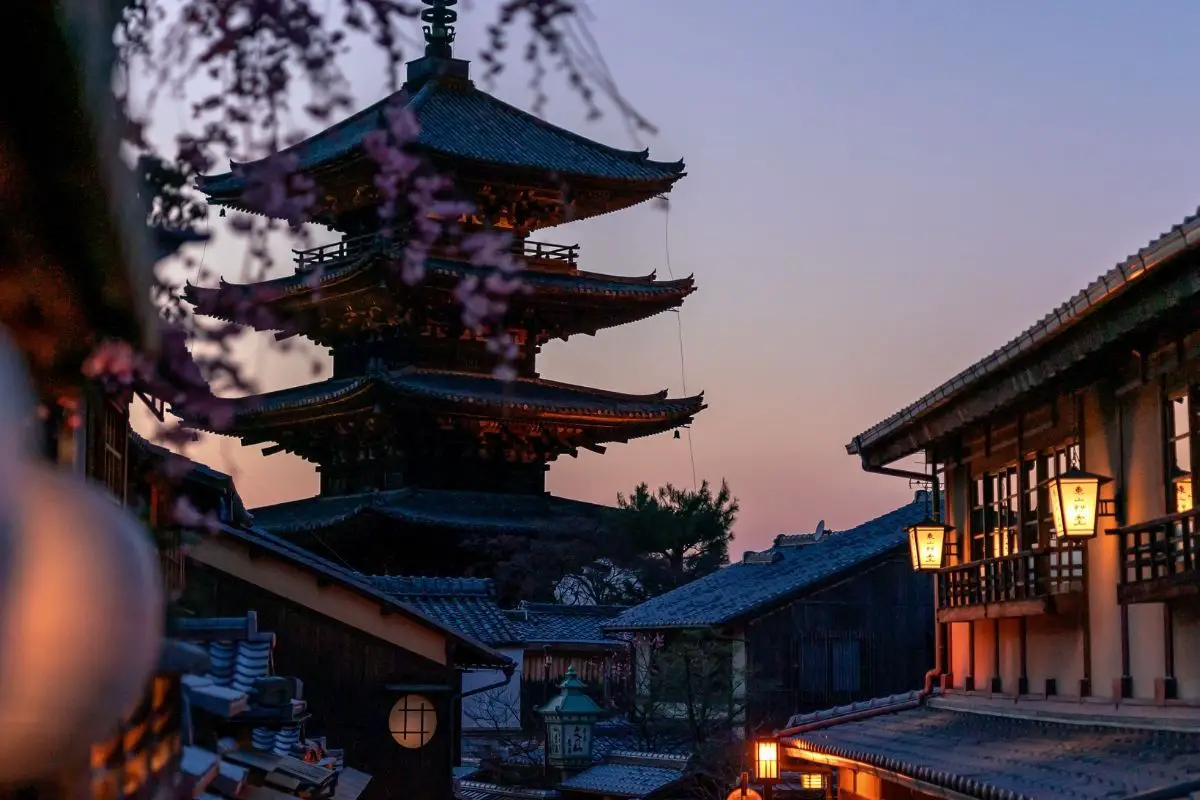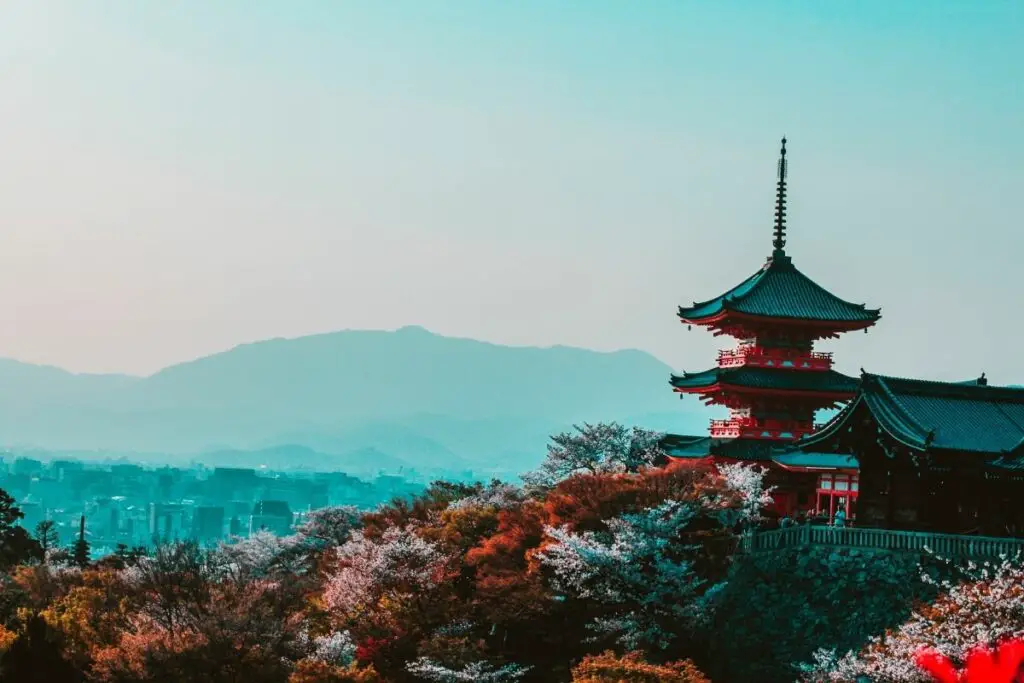Planning the trip of a lifetime to Japan?
Kyoto should be up at the top of destinations you should visit as it is one of the cheapest major destinations in the developed world and is bursting with authentic Japanese culture, history and there are lots of unique and exciting places you can visit during your time there.

In this guide, we look at 9 things that you should do in Kyoto, Japan. These activities range from free activities to hikes, particular areas of the city you should walk through and restaurants you should visit.
Adding these ideas to your itinerary is a sure way to spend a wonderful time in Kyoto.
9 Things To Do In Kyoto
Nijo Castle
Cost: Admission is 600 yen (at the time of writing)
Nijo Castle is one of the most historic buildings in Kyoto and it is most definitely worth a visit during your time in Kyoto. The castle was built in 1603 as the Kyoto residence for the first shogun of the Edo period.
The castle illustrates the power the shoguns held in ancient Japanese history (see also ‘Who Unified Japan?‘) and it is a UNESCO world heritage site. When visiting the castle pay attention to the wooden floorboards which have a unique chirping sound which meant no one could break into the castle without being heard and caught.
The chirping noise is one of the earliest safety features in a castle to keep royalty safe (see also ‘How Safe is Japan?‘).
Kiyomizu-Dera Temple
Cost: Entry to the main section of the temple is 300 yen (at the time of writing)
This Buddhist temple is nestled in the trees that surround Kyoto. The temple (see also ‘Top 10 Famous Japanese Temples To Visit‘) gives a unique viewpoint of Kyoto and you can truly get a sense of the size of the city and why it was once the main city in Japan.
There is a stillness in this busy shrine that cannot be explained and it is listed as a UNESCO World Heritage site in Kyoto.
The temple holds over 1,200 years of history and often you will see the Buddhist monks that care for this shrine to this day.
You could also get a great view of the city from the top of Kyoto Tower but by going to this temple you get to view the city right in the heart of its history rather than in a modern built building.
Kinkaku-Ji Temple
Cost: Admission is 400 yen (at the time of writing)
Another beautiful Buddhist temple but this one is special as the top two floors of the Zen temple are covered in gold leaf. The glistening Golden Pavilion was originally built as a retirement villa for a Shogun but became a Zen temple in the 15th Century.
During the Fall is a wonderful time to visit this temple as the colors on the trees that surround the temple and in the distance create a gorgeous tapestry with the focus being the golden color of the temple in contrast to the rich reds and deep marigold yellow leaves.
Arashiyama Bamboo Forest
Cost: Admission to the forest trail is free
The bamboo forest is very famous and takes less than 30 minutes on a train from Kyoto station to travel to. The town it is located in is the home of hundreds of Japanese teahouses, traditional restaurants, and gorgeous Japanese shops.
The walk through the forest is gorgeous as you look up to see the bamboo’s stretching overhead almost touching the sky and the sound the wind makes as it gently breezes through the forest is like a song.
Fushimi Inari Shrine
Cost: Admission is Free
Fushimi Inari is known worldwide for its gorgeous brightly colored tori gates that guide hikers from the base of the mountain to the temple on the top.
This hike is often climbed in the early morning or later in the day as the top is quite steep and the humidity that is common in Japan makes it even more difficult to climb in the middle of the day. Make sure you bring plenty of water.
Nishiki Market
Cost: Admission is free
Nishiki Market still holds its history and is lined with ancient family food shops and stalls as well as other classic Japanese goods such as sake, fans, and samurai swords (see also, ‘What is a Katana?’).

While the market may seem small there is so much to see and you will stop to look in every window you pass to see something new and wonderful. There is a huge mix of cuisine available in this market and it should be visited at lunchtime to enjoy a delicious meal.
Take A Stroll Through The Local Parks
Cost: Admission is free for most local parks
Depending on the time of year you are traveling you may get to see the cherry blossom trees in bloom (see also ‘Are Cherry Blossoms Edible?‘). The start of the cherry blossom season starts in Southwestern Japan in February and stretches northward and reaches Kyoto between the last two weeks of March and the first two weeks of April.
The parks are lined with cotton candy-like trees that dance in the wind and smell incredible.
Stay in a Capsule Hotel
Cost: Differs between capsule hotel establishments
Capsule hotels (see also ‘Best Hotels In Japan‘) are a unique overnight experience available in Japan. Staying in a capsule hotel gives you the opportunity to meet other travelers and Japanese people who are traveling for work or leisure.
In some capsule hotels in Kyoto there are onsen baths, sure to be another unique experience, but note that tourists with piercings and tattoos cannot avail of this facility due to Japanese cultural restrictions.
Take A Walk Through The Gion District
Cost: Free
The Gion district is the most famous geisha area in Kyoto. It is located between the Kamo River and the Yasaka Shrine around Shijo Avenue. The area is lined with traditional teahouses and Japanese homes and in the evening time you may catch a glimpse of a traditional Japanese Geisha stepping into a restaurant.
Geisha (see also ‘Do Geishas Still Exist?‘) are very hard to see as they are protected in Japan and geisha women will not walk down the streets, they simply go from car to restaurant and then back to their home again. The Gion District has a fantastic festival which is held around July 17th every year.
This festival is one of the most famous traditional celebrations and creates a wonderful buzz around the Gion area, as well as the other side of the river as demonstrations, street vendors, and observers line the streets.
This list only gives a glimpse of what there is to do in Kyoto. Karaoke is hugely popular in Japan and most bars will have a karaoke night which is always fun!
Whether you are traveling in a group or alone you will always find someone to speak with as Japanese people are extremely friendly and curious about the western world. Immerse yourself in the city and you will leave in awe of its history and beauty.
Frequently Asked Questions
Which City Is Better, Tokyo or Kyoto?
Which city is better depends on what you are looking to see in Japan. If you are looking to visit a modern, bustling city with tall buildings and a bigger selection of western stores then you should visit Tokyo as in this case Tokyo is better.
If you are looking to see an authentic Japanese city, steeped in culture and with whispers of history on every street corner then Kyoto would be better for you.
Both cities are unique and exciting and if you are able to appreciate the individuality of both cities then you will enjoy visiting both cities.
Is Kyoto Expensive For Tourists?
Kyoto is much cheaper than Tokyo (see also ‘How Far Is Tokyo To Kyoto?‘) but would be more expensive than rural, or less popular tourist destinations within Japan.
With 7/11’s on most street corners, it is easy to find cheap breakfast and lunch meals that are still authentically Japanese and with numerous chains, such as the curry house Sukiya, you can find cheap places to get a decent dinner also.
A lot of tourist attractions are free and simply walking through the city you will be in awe of this beautiful city. You can make your trip as cheap or expensive as you wish and capsule hotels are another unique way that you can make your trip more affordable while still trying amazing new things.
Is Kyoto Difficult To Get To?
Kyoto is very easy to get to whether you fly into Osaka or Tokyo (see also ‘How Far Is Osaka From Tokyo?‘). Be aware of journey times and also what time the last train leaves if you are flying (see also, ‘How Long is the Flight from Hawaii to Japan?‘) in at night time.
Kyoto has a large train station in the center of the city that connects Kyoto with its surrounding cities and other prefectures (see also ‘How Many Prefectures In Japan?‘). From Kyoto Train Station, you can get a bus or train to Osaka airport as well as the Shinkansen to Tokyo and more destinations.
It is an accessible city and it is also easy to travel around the city itself with a developed tube and bus system making it easy to navigate for travelers.









